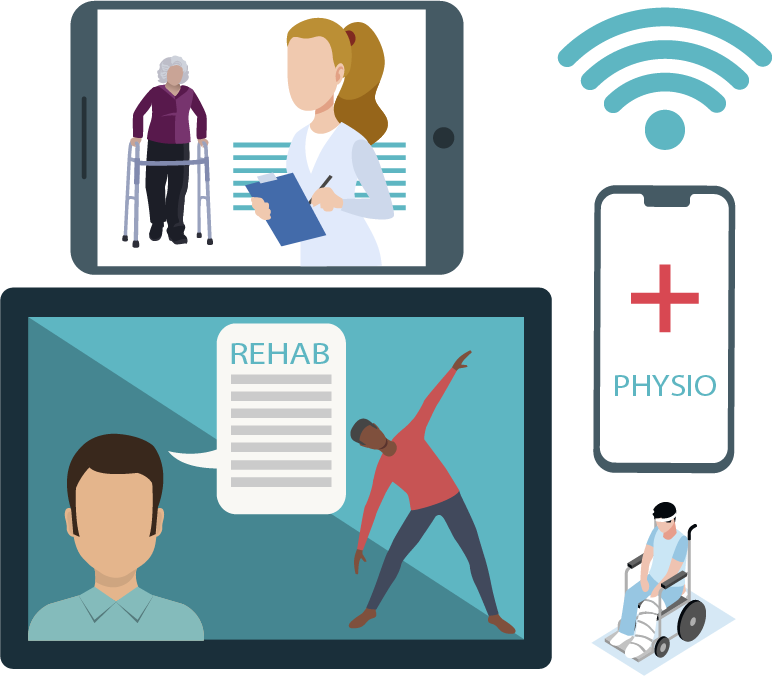Physical Therapy and Exercise Rehabilitation is important for both our physical and mental well being, but with the rise in COVID-19 numbers province wide, what is the safest way to continue your care??
Recent research on Telerehabilitation has studied patient outcomes such as pain, endurance, strength, balance, general health status, activity participation and more. It has shown that regardless of the patient population or disease (chronic lower back pain post-operative total hip or knee replacements, stroke, osteoarthritis, nonspecific low back or neck pain, pelvic floor dysfunction etc.) telerehabilitation is comparable to clinic-based therapy. Interestingly, studies on telerehabilitation studies have also shown significantly better outcomes in the telerehab groups compared to the in-clinic care groups for increased compliance with home exercise programs, ease to access appointments and overall satisfaction with care.
Therefore, if you are in need of Physical or Athletic therapy and in person sessions are not an option for you, Telerehabilitation is an effective alternative in most scenarios.
Telerehabilitation is the delivery of rehabilitation services over secure telecommunication networks and the internet. Telerehabilitation allows patients to interact with their physio/athletic therapist via video remotely and can be used both to assess patients and to deliver therapy. According to the College of Physiotherapists of Ontario, “Tele-rehabilitation relates to all aspects of patient care including the patient interview, physical assessment and diagnosis, treatment, maintenance activities, consultation, education, and training. It can include the use of media such as videoconferencing, email, apps, web-based communication, and wearable technology”.

Both physiotherapy and athletic therapy are professions that are very hands-on and “physical”. Therefore, it would make sense to be apprehensive about the effectiveness of Telerehabilitation compared to in person sessions. While it makes sense that most physical rehabilitation is provided in person and hands-on, technology that can connect us in real time, provides an opportunity for physio and athletic therapists to provide alternate or supplemental care when circumstances do not allow in person visits. For example, the College of Physiotherapists outlines that, “virtual care would be appropriate if a patient cannot easily attend in-person sessions because of things like a shortage of physiotherapists in their region, transportation or mobility issues, or a health pandemic that discourages physical contact”.

Physiotherapists and Athletic Therapists are experts in movement and movement conditions that affect one’s quality of life and optimal physical functioning or performance. Therefore, while you may receive hands on or “manual” treatment during your in person sessions, physical and athletic therapists have many other tools and ways to assist people in their return to optimal function and health. Some examples include, patient education, self care strategies and tools, as well as remedial or therapeutic exercises, the core and foundation of our training, to compliment manual therapy treatments.
Undeniably, there will always be times when hands on therapy, assessment and treatment are the appropriate option for care, but with recent events such as the global COVID-19 pandemic, busy schedules, extreme weather events etc. how wonderful is it that there is an option that allows us to receive a high quality of care from the comfort of our own homes!

